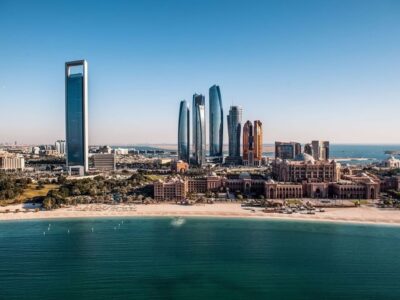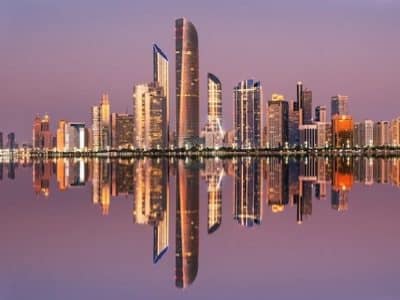The Middle East’s beauty sector is undergoing a fundamental transformation as increasingly educated consumers reshape how global brands approach one of the world’s fastest-growing cosmetics markets, Pedro Aguilar, Consumer Insights, CRM & Data Lead Middle East Estée Lauder Companies, told Arabian Business.
Aguilar will further explore this transformation during the MRMW MENA 2025 conference in Dubai, where he’ll discuss how AI and data are reshaping customer engagement strategies across the region.
Today’s Middle Eastern beauty consumer is “young in mindset and highly digital,” researching products on social media, discovering brands through content creators, and shopping seamlessly across online and offline channels, Aguilar explained.
These shoppers move fluidly between luxury and mass-prestige brands, prioritising product efficacy, ingredient transparency, and precise shade matching over brand loyalty alone.
The pandemic has accelerated a shift toward more sophisticated beauty routines that blur the lines between cosmetics and wellness. The trend of “skinification” consumers expecting skincare benefits across all categories, including makeup and haircare, continues to gain momentum across the region.
“There’s greater demand for credible claims, visible results, and education,” Aguilar said. At-home beauty devices and clinic-adjacent treatments have moved into the mainstream, while consumers increasingly reward brands that prove performance in the region’s demanding climate conditions, including intense heat, humidity, and sun exposure.
Generational divide shapes engagement
Beauty brands are tailoring strategies to distinct generational preferences across Middle Eastern markets. Generation Z gravitates toward short-form video content, authenticity, and interactive formats, favouring product trials, miniature sizes, and creator-led education. Millennials prioritise efficacy and routine-building through detailed product reviews, while Generation X values expert guidance and premium service experiences.
However, local nuance remains critical. Consumer expectations differ markedly between the United Arab Emirates, Saudi Arabia, Kuwait, and other regional markets, requiring brands to customise messaging, languages, and channel strategies by country.
The industry is leveraging first-party consumer data to orchestrate sophisticated lifecycle journeys, from initial onboarding and shade guidance to replenishment reminders and exclusive event invitations. In-store, clienteling tools enable beauty advisors to deliver tailored recommendations based on individual customer profiles.
“The most effective approaches blend behavioural triggers, such as routine cadence, with preferences around concerns, formats, and textures to deliver relevant content, services, and offers across online and offline touchpoints,” Aguilar said.
Data privacy remains paramount. The industry emphasises transparent consent mechanisms, clear opt-in and opt-out controls, and compliance with applicable regulations, including GDPR, UAE data protection laws, and Saudi Arabia’s Personal Data Protection Law (PDPL).

Technology transformation
Modern business intelligence platforms, customer data platforms, and social listening tools have fundamentally changed how beauty companies gather and act on consumer insights. Social media monitoring and review analysis reveal emerging ingredient claims and aesthetic preferences in real time.
Generative AI is now accelerating the synthesis of unstructured consumer feedback, helping companies move beyond basic reporting toward action-oriented narratives. Predictive analytics are shifting the industry from reactive to proactive, turning social media, search, and review signals into rapid trend identification.
In customer relationship management, unified profiles and predictive models enable dynamic, localised content and optimised send-time algorithms, ensuring each message reaches consumers at the right moment and frequency.
What distinguishes the Middle East beauty market is its unique cultural context. Prestige fragrance holds particular significance, with layering and gifting central to the category. Consumers demonstrate high beauty literacy, strong social connectivity, and rapid adoption of innovation, yet they simultaneously expect experiential retail and expert service alongside digital convenience.
Climate considerations strongly influence product preferences, driving demand for specific textures, finishes, and active ingredients. The region’s diversity across nationalities and lifestyles necessitates hyper-localisation strategies that vary by market.
Looking ahead three to five years, Aguilar anticipates continued premiumisation coupled with rigorous proof-of-performance standards. The convergence of dermatological beauty, at-home devices, and professional services will deepen, while diagnostics-driven personalisation becomes more sophisticated.
Product innovation will focus on humidity-proof formulations, skin-friendly makeup, and expanded shade ranges with precise undertone matching. Sustainable luxury, including refillable packaging and responsible materials, will grow pragmatically rather than as pure marketing positioning.
Men’s grooming is expected to broaden significantly, while creator commerce matures beyond influencer partnerships into more structured commercial models. Clinic partnerships will expand as consumers seek fast, visible results, and demand will grow for locally resonant storytelling and innovation specifically designed for the region’s climate and lifestyles.
The trajectory signals a market where sophistication, performance, and cultural relevance will determine success in one of the beauty industry’s most dynamic regions.
These themes will take centre stage at MRMW MENA 2025, where Aguilar and other industry leaders will share real-world examples of how innovation, data, and AI are transforming customer experiences across sectors.





